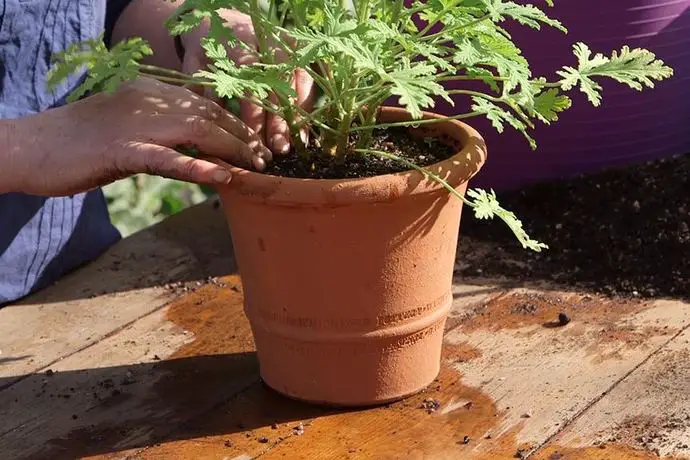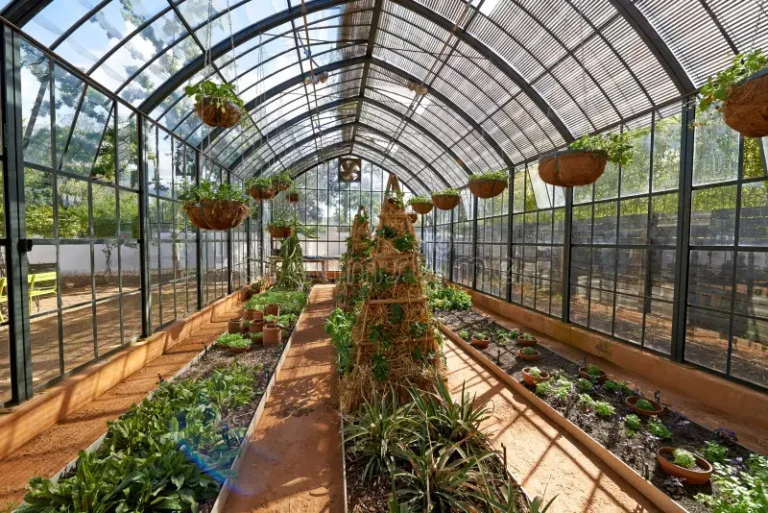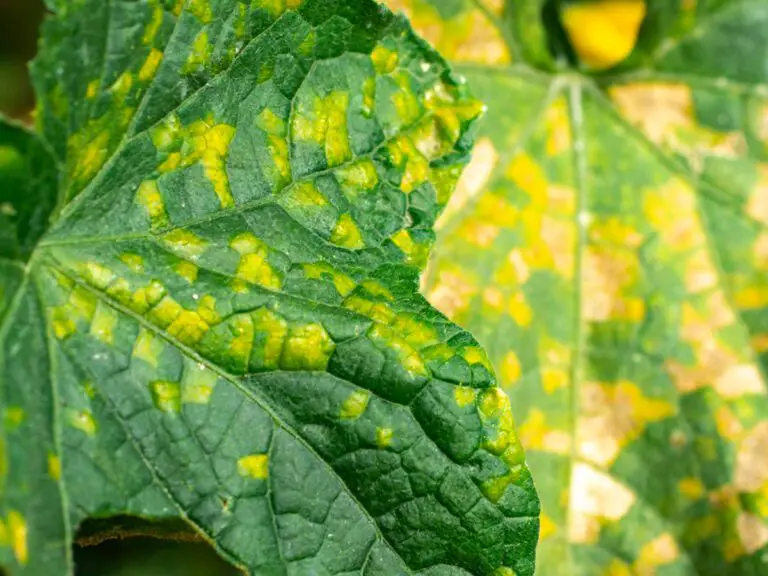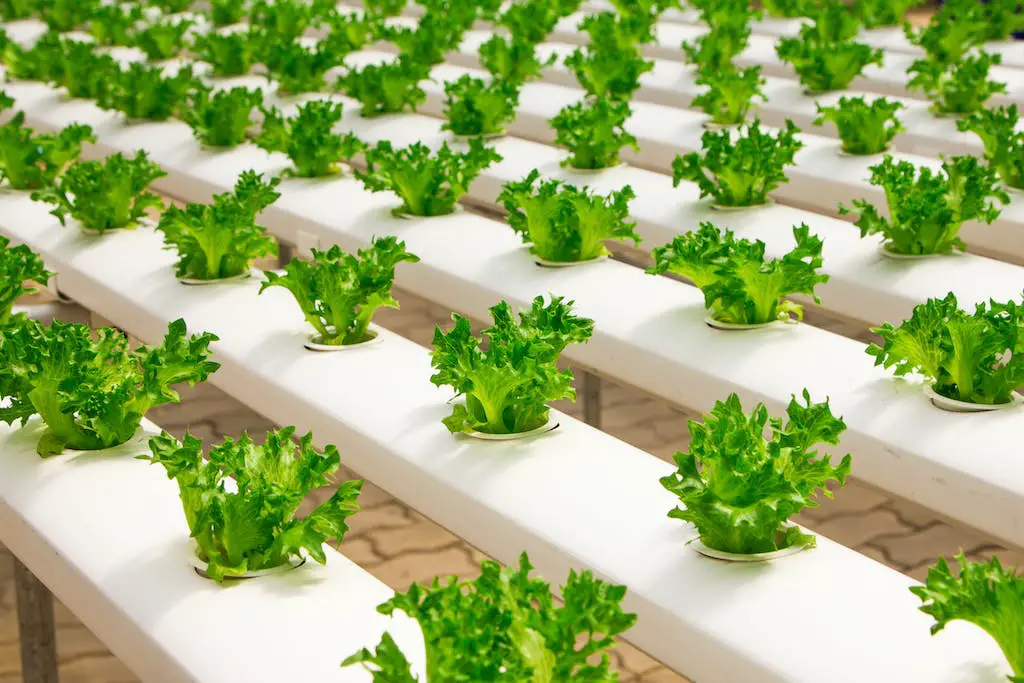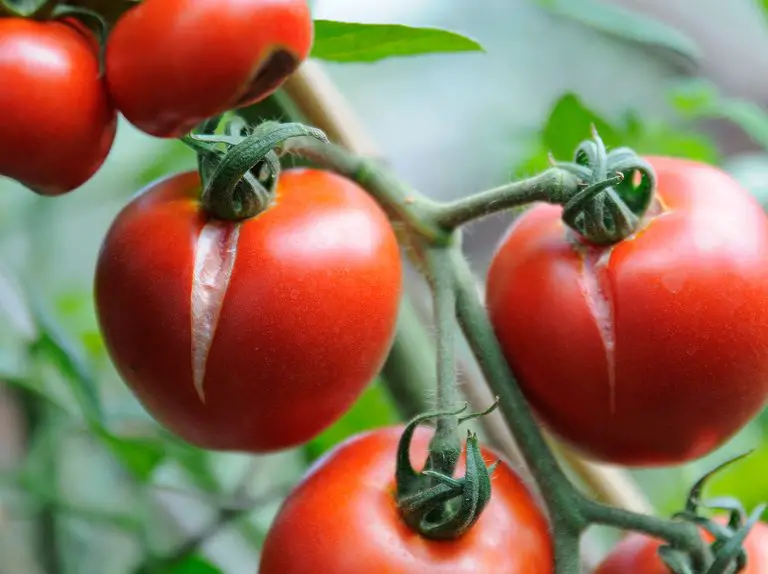Citronella Plant Pointers: Fragrant Friends
Are you looking to keep pesky bugs at bay while adding a delightful fragrance to your garden? Enter the Citronella plant, your fragrant friend in the battle against insects. Did you know that Citronella is a natural insect repellent commonly used in candles and sprays? As an experienced gardener, I can guide you on how to cultivate and care for these aromatic plants. Citronella plants are not only functional but also beautiful additions to any outdoor space. So, if you’re ready to enjoy bug-free evenings in your garden surrounded by a pleasant aroma, let’s dive into the world of Citronella plants together!
Table of Contents
How to choose the best location for your citronella plant
When selecting the optimal location for your citronella plant, it is crucial to consider the plant’s sunlight requirements.
:max_bytes(150000):strip_icc()/SPR-citronella-plant-growing-guide-7499526-hero-ba28c3149cf04be8a265a725fbb42da3.jpg)
- Sunlight Requirements:
- Citronella plants thrive in full sunlight. To ensure their growth and effectiveness as natural mosquito repellents, they need a minimum of six to eight hours of direct sunlight daily.
- When selecting a spot for your citronella plant, choose an area with ample sunlight. South-facing locations are ideal, as they receive the most sunlight throughout the day.
- Protection from Strong Winds:
- Citronella plants are delicate and susceptible to damage from strong winds. Wind can lead to stunted growth and reduce their effectiveness in repelling mosquitoes.
- To safeguard your citronella plant:
- Select a sheltered location: Place it near a wall, fence, or other structures that provide protection from strong winds.
- Use windbreaks: If your garden is exposed to strong winds, consider planting other shrubs or trees around the citronella plant to create a natural windbreak.
- Potted citronella plants: If growing citronella in pots, position them in a protected area, such as a covered patio or balcony.
Remember that a well-placed citronella plant not only adds greenery to your surroundings but also contributes to keeping pesky mosquitoes at bay! 🌿🦟
Understanding the watering needs of citronella plants
:max_bytes(150000):strip_icc()/SPR-citronella-plant-growing-guide-7499526-Hero-A-06ead0ba7700486086945a1b36c4f6d9.jpg)
- Well-Draining Soil:
- Citronella plants thrive in soil that is well-draining. This means the soil allows excess water to flow away, preventing waterlogging around the roots.
- Use a light and porous potting mix that provides good drainage. You can also add perlite or sand to improve soil aeration.
- Moisture Levels:
- Consistent moisture is essential for citronella plants. However, striking the right balance is crucial:
- Overwatering: Too much water can lead to root rot and damage the plant.
- Underwatering: Insufficient water causes stress and may result in stunted growth.
- Regularly check the soil moisture to ensure it remains within the optimal range.
- Consistent moisture is essential for citronella plants. However, striking the right balance is crucial:
- Watering Guidelines:
- Growing Season (Spring to Fall):
- Water your citronella plant when the top inch of soil feels dry to the touch.
- Aim for even moisture, but avoid saturating the soil.
- Winter Dormancy:
- Reduce watering during winter when the plant is dormant.
- Allow the soil to dry out slightly between waterings.
- Growing Season (Spring to Fall):
- Container Considerations:
- If growing citronella in pots:
- Choose containers with drainage holes to prevent water accumulation.
- Elevate the pots slightly to allow excess water to escape.
- Empty saucers promptly to avoid standing water.
- If growing citronella in pots:
- Environmental Factors:
- Temperature and Humidity:
- Adjust watering frequency based on weather conditions.
- Hotter temperatures and low humidity may require more frequent watering.
- Wind Exposure:
- Wind can accelerate soil drying. Monitor soil moisture accordingly.
- Temperature and Humidity:
Remember, consistency is key. It’s better to slightly underwater than risk overwatering. Your citronella plant will thrive when you find the right balance! 🌿💧
Tips for pruning and shaping your citronella plant

Purpose: Pruning encourages new growth, maintains a compact shape, and ensures the overall health of the plant.
Timing: Prune citronella plants in spring or early summer, when new growth is emerging.
Tools: Use sharp, clean gardening shears to make precise cuts.
Technique: Cut just above a leaf node (where a leaf meets the stem) to encourage bushier growth.
Targets for Pruning:Dead Branches: Remove any dead, damaged, or diseased branches promptly. This prevents the spread of pests and diseases.
Overcrowded Areas: Thin out crowded areas to improve air circulation and sunlight penetration.
Purpose: Shaping allows for better air circulation and sunlight exposure.
Symmetry: Consider the natural growth pattern of the plant. Aim for a symmetrical shape to promote healthy growth.
Selective Branch Removal: Shape the plant by selectively removing branches. Create a balanced appearance.
Avoid Over-Pruning:Stress: Over-pruning can stress the plant.
Essential Oils: Citronella plants produce essential oils that act as natural insect repellents. Avoid inhibiting this process.
Regular Pruning: Perform regular maintenance pruning to keep the plant in good condition.
Observation: Observe your citronella plant and adjust pruning as needed.
Remember, a well-pruned and shaped citronella plant not only repels mosquitoes but also adds beauty to your garden! 🌿🦟
Identifying common pests and diseases that affect citronella plants
Citronella plants are generally low-maintenance, but like any plant, they can fall victim to pests and diseases.The following table explains about the common pests and diseases of citronella plants:
| Pest/Disease | Symptoms | Treatment | Reasons |
|---|---|---|---|
| Aphids | – Small, soft-bodied insects on undersides of leaves. – Stunted growth, yellowing, distorted leaves. | – Handpick larger pests. – Spray with water to knock off aphids. – Use insecticidal soap. | – Suck sap from leaves and stems. – Often found in groups. |
| Mealybugs | – Small, white, cotton-like insects on leaves and stems. – Sticky honeydew secretion. – Stunted growth, yellowing, leaf drop. | – Handpick or wipe off. – Spray with water. – Use insecticidal soap. | – Cluster on plant parts. – Attract ants and sooty mold. |
| Spider Mites | – Yellowing of leaves. – Fine webbing on the plant. | – Spray with water. – Use insecticidal soap. | – Feed on sap. – Thrive in hot, dry conditions. |
| Scale Insects | – Small, round insects on stems and leaves. – Protective covering. – Yellowing, stunted growth, leaf drop. | – Remove manually. – Use insecticidal soap. | – Attach to plant parts. – Difficult to detect due to covering. |
| Powdery Mildew | – White, powdery spots on leaves and stems. – Leaves may curl or distort. | – Prune affected parts. – Improve air circulation. – Use fungicides if severe. | – Favors high humidity and poor air circulation. |
The benefits of using citronella plants as natural mosquito repellents
Citronella plants are known for their mosquito-repelling properties due to the strong scent they emit. The benefits of using citronella plants as natural mosquito repellents include:
In summary, citronella plants offer a natural, effective, and environmentally friendly way to repel mosquitoes and other insects.
How to propagate citronella plants through cuttings
To propagate citronella plants through cuttings, ensure you select a healthy and mature plant for the best chance of success.
- Choose a stem that is around 4-6 inches long, making a clean cut just below a leaf node using a sharp, sterilized knife or pruning shears.
- Remove the lower leaves to expose a node where roots will grow, and then place the cutting in a container filled with well-draining potting mix.
- Keep the soil consistently moist but not waterlogged, and provide indirect sunlight to promote root development.
- With proper care and attention, your citronella cuttings will soon establish roots and grow into new, thriving plants for your garden or indoor space.
Creating a DIY citronella plant repellent spray
Citronella plants are indeed a wonderful choice for natural mosquito repellents! Their strong citrus scent helps mask the human body odor that attracts mosquitoes. Creating your own DIY citronella plant repellent spray is not only cost-effective but also environmentally friendly. Let’s break down the steps to make this effective spray:
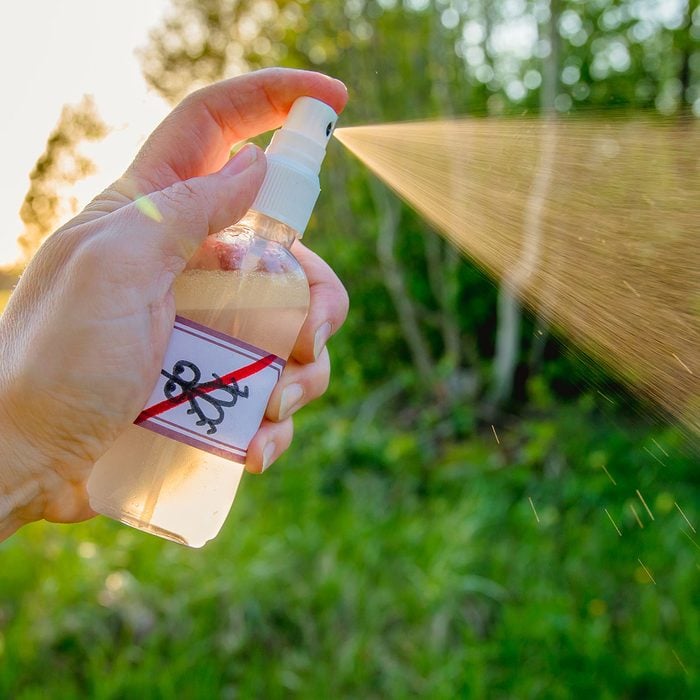
- Harvest Fresh Citronella Leaves:
- Start by harvesting fresh citronella leaves from your plant. The essential oils are most potent when freshly picked.
- Prepare the Leaves:
- Finely chop or crush the leaves. This helps release the aromatic oils.
- Create the Spray Solution:
- In a spray bottle, combine the chopped citronella leaves with water.
- The ratio of leaves to water depends on your preference. You can start with a handful of leaves and add enough water to cover them.
- Infusion Time:
- Let the mixture sit for at least 24 hours. During this time, the essential oils from the leaves will infuse into the water.
- Strain and Store:
- After 24 hours, strain out the plant material (the chopped leaves). You can use a fine mesh strainer or cheesecloth.
- Transfer the infused water back into the spray bottle.
- Application:
- Your homemade citronella spray is now ready to use!
- Spray it outdoors to repel mosquitoes naturally.
- Experiment with the concentration by adjusting the number of leaves or the amount of water. Find the right balance for maximum effectiveness.
Remember to shake the spray bottle before each use to ensure the oils are well-distributed. Enjoy mosquito-free evenings in your garden with this DIY repellent spray! 🌿🦟
Exploring different varieties of citronella plants
Citronella plants are popular choices for natural mosquito repellents due to their strong citrus fragrance. When exploring different varieties of citronella plants, it’s essential to consider their distinct characteristics and growth habits.
| Variety | Advantages | Disadvantages | Characteristics |
|---|---|---|---|
| Citronella Grass (Cymbopogon nardus) | – Strong mosquito-repelling properties | – Requires warm climates | – Robust growth- Lemon-scented leaves |
| Java Citronella (Cymbopogon winterianus) | – Effective mosquito repellent | – Needs specific growing conditions | – Similar to Citronella Grass- Used for Citronella oil production |
| Lemon Grass (Cymbopogon flexuosus) | – Versatile culinary herb | – May not withstand frost | – Citrusy aroma- Used in cooking and teas |
| Pelargonium citrosum (Mosquito Plant) | – Pleasant lemon scent | – Not as potent as other varieties | – Compact growth- Suitable for containers |
Remember to consider your climate, space, and preferences when selecting a citronella variety for your garden. 🌿🍋
Best practices for fertilizing your citronella plant
Fertilizing your citronella plant is an essential aspect of its care routine to ensure optimal growth and health.
- Balanced Fertilization:
- Use a balanced fertilizer with equal ratios of nitrogen, phosphorus, and potassium for citronella plants.
- This promotes sustained growth and lush foliage with fragrant leaves.
- Slow-Release Fertilizer:
- Apply a slow-release fertilizer during the growing season to sustain growth and promote healthy foliage.
- This helps prevent issues like nutrient burn or excessive growth.
- Moderate Application Frequency:
- Fertilize citronella plants every six to eight weeks during the active growing season, typically from spring to early fall.
- Avoid over-fertilization to prevent nutrient burn and excessive growth.
- Pre-fertilization Preparation:
- Thoroughly water the plant before applying fertilizer to prevent root burn and ensure proper absorption.
The following table explains about the best practices for fertilizing citronella plants:
| Fertilizer Type | Application Rate | Treatment Frequency | Effect |
|---|---|---|---|
| Slow-release granular | 1 tablespoon per plant | Every 2-3 months | Provides continuous nutrients |
| Liquid balanced fertilizer | Dilute according to label instructions | Every 2 weeks during growing season | Promotes vigorous growth and foliage |
| Organic compost | 1-2 inches around base | Twice a year | Enhances soil fertility |
By practicing proper fertilization techniques, you can ensure that your citronella plant remains vibrant and healthy, ready to ward off pesky mosquitoes with its natural deterrent properties.
I’ve been using the Jobe’s Organics Granular Fertilizer in my garden, and I’m impressed! The slow-release formula ensures consistent nourishment for my plants over several weeks. Yes, it does have a distinct smell (reminiscent of a chicken house), but the results are worth it. Within a day or two of application, I noticed my plants responding positively. The granules break down into humus, promoting healthy growth. Plus, the price on Amazon is unbeatable. Overall, Jobe’s Organics is a fantastic choice for natural plant nutrition.” 🌱🌿
✅ Uniform Growth: Unlike quick-release fertilizers that can cause uneven growth and lawn diseases, slow-release fertilizers promote more uniform growth in established lawns and plants. They reduce the risk of stress on grass plants and maintain a healthier lawn.
✅ Environmental Friendliness: Slow-release fertilizers are safer for the environment because they are less likely to leach into the soil, minimizing the risk of water pollution.
✅ Cost-Efficiency: Although slow-release fertilizers are initially more expensive than quick-release alternatives, their long-lasting effects make them cost-efficient in the long run. Fewer applications are needed, which balances out the higher upfront cost.
❌ Cool Soil Limitations: Slow-release fertilizers may be less effective in cool soil conditions because nutrient release is influenced by soil temperature. In colder weather, their impact might be reduced.
❌ Water Requirements: During periods of high temperatures, slow-release fertilizers may require more water to prevent nutrient leaching. Adequate watering is essential to ensure proper nutrient uptake.
Tips for repotting and transplanting citronella plants
Choose a new pot that is slightly larger than the current one. This allows room for proper root growth.
Ensure the new pot has drainage holes to prevent waterlogging. Citronella plants are sensitive to overwatering.
Gently remove the plant from its current container. Be careful not to disturb the roots excessively.
Place the plant in its new home, making sure the soil level remains the same as before.
Thoroughly water the plant after transplanting. This helps settle the soil around the roots.
Monitor soil moisture in the following days. Avoid waterlogging but keep the soil consistently moist.
Place the citronella plant in a location with plenty of sunlight. South-facing spots are ideal.
Start by placing it in a shaded area for a few hours a day, then gradually increase sunlight exposure.
When transplanting citronella plants from indoors to outdoors:
Select a spot with well-draining soil.
Ensure protection from strong winds to prevent damage.
Regularly check the moisture level of the soil. Adjust watering as needed.
Strike a balance between avoiding waterlogging and preventing drought stress.
Remember, a smooth transition ensures your citronella plant thrives in its new environment and continues to serve as a natural mosquito repellent! 🌿🦟
Harvesting and preserving citronella leaves for use in homemade products

When it comes to harvesting and preserving citronella leaves for use in homemade products, timing is key.
- Timing:
- Morning Harvest: The best time to harvest citronella leaves is in the morning. At this time, the aromatic oils are at their peak concentration.
- Avoid Midday Heat: Avoid harvesting during the hottest part of the day, as the essential oils may evaporate.
- Harvesting Technique:
- Gentle Plucking: Gently pluck the leaves from the plant. Be careful not to damage the stems or surrounding foliage.
- Select Healthy Leaves: Choose leaves that are healthy, vibrant, and free from pests or diseases.
- Preservation:
- Drying Method: To preserve citronella leaves, dry them in a cool, dark place away from direct sunlight.
- Air Drying: Bundle the leaves together and hang them upside down. This allows air circulation and prevents mold.
- Dehydrator or Oven: Alternatively, use a food dehydrator or set your oven to the lowest temperature (around 100°F or 37°C) to dry the leaves.
- Storage: Once fully dried, store the leaves in an airtight container away from light and moisture.
- Uses for Preserved Citronella Leaves:
- Citronella Candles: Add dried citronella leaves to homemade candles for a natural mosquito-repellent effect.
- Herbal Sachets: Fill small fabric sachets with dried leaves and place them in closets, drawers, or near windows to keep insects away.
- Infused Oils: Create citronella-infused oils by steeping dried leaves in carrier oils (such as olive oil or coconut oil). Use these oils for massage or as a base for homemade skincare products.
- Potpourri: Combine dried citronella leaves with other fragrant herbs and flowers to make potpourri for a pleasant aroma.
Remember, your preserved citronella leaves not only enhance your DIY creations but also contribute to a more eco-friendly and sustainable lifestyle. Happy harvesting! 🌿🍋
Maximizing the fragrance of your citronella plant
To enhance the fragrance of your citronella plant, consider planting it in a sunny location with well-draining soil.
- Optimal Sunlight Exposure:
- Citronella plants thrive in full sun and require a minimum of six hours of direct sunlight daily for maximum essential oil production.
- Direct sunlight enhances the characteristic lemony scent of the plant.
- Pruning and Pinching for Growth Promotion:
- Regular pruning and pinching of the plant promote new growth and increase the release of aromatic compounds from the leaves.
- Intensifies the fragrance in the garden or outdoor space.
- Proper Watering Practices:
- Avoid overwatering to prevent root rot and diminish essential oil production.
- Allow the top inch of soil to dry out between waterings and water deeply but infrequently to encourage deep root growth and robust fragrance development.
- Balanced Fertilization:
- Apply a balanced fertilizer specifically formulated for citrus plants to support overall plant health and enhance the aromatic qualities of the citronella plant.
The ideal soil pH for citronella plants
Citronella plants thrive in a variety of soil types, as long as the soil drains well. However, they perform best in slightly acidic, sandy, or chalky loam with a pH level ranging from 5.8 to 6.3. Here are some key points about citronella soil preferences:
- Adaptability: Citronella plants can adapt to different soil types, but good drainage is essential.
- Ideal pH: Aim for a soil pH between 5.8 and 6.3 for optimal growth.
- Sandy or Loamy Soil: Sandy or loamy soils with good drainage are favorable.
- Avoid Waterlogged Soil: Citronella plants are sensitive to overwatering, so avoid waterlogged soil to prevent root rot.
Remember to choose well-draining soil and maintain the appropriate pH level to keep your citronella plants healthy and thriving! 🌿🍋
As an avid gardener, I recently tested my garden soil using the Luster Leaf Rapitest Soil pH Testing Kit. The kit’s affordability and ease of use appealed to me. Within minutes, I obtained a pH reading, which helped identify areas needing soil amendments. However, the limited number of tests and color interpretation challenges are worth noting. For occasional pH checks, this kit serves its purpose, but for precise and frequent testing, other options may be more suitable. Happy gardening! 🌿🌱
- Cost-Effective: The Luster Leaf Rapitest kit is affordable, making it accessible for most gardeners and homeowners.
- Ease of Use: The kit provides a simple and straightforward method for testing soil pH.
- Fast Results: You can immediately get a reading once you perform the test.
- Compact and Portable: The kit is compact and can be easily carried to different areas of your garden.
- No Batteries Required: Unlike some electronic testers, this kit does not rely on batteries.
- Limited Number of Tests: The kit includes a finite number of tests. If you need to test soil pH frequently, you may need to purchase additional kits.
- Hard to Read: Some users find it challenging to interpret the color changes on the test strip accurately.
- Disposal: Disposing of used test strips can be inconvenient and may not be environmentally friendly.
- Broad pH Range: The kit covers the full pH range from 0 to 14, which means it may not provide precise readings for specific pH levels.
Incorporating citronella plants into your outdoor landscaping
By following these simple steps, you can enjoy a comfortable and mosquito-free outdoor experience! 🌿🦟
How to protect citronella plants during the winter months
Taking care of citronella plants during winter is essential to ensure their well-being. Here are some practical tips to protect your citronella plants and help them thrive even in colder months:
- Insulation and Temperature Stability:
- Insulate the plant by wrapping it with burlap or frost cloth. This protective layer acts as a barrier against harsh weather conditions.
- Maintain a stable temperature around the plant. Avoid sudden temperature fluctuations, which can stress the plant.
- Reduced Watering:
- Decrease watering frequency during winter. Citronella plants are not actively growing, so they require less moisture.
- Allow the soil to dry out slightly between waterings to prevent root rot.
- Protective Coverings:
- Use mulch around the base of the plant. Mulch helps retain soil warmth and prevents freezing.
- Consider using frost cloths or other protective coverings to shield the plant from extreme cold.
- Indoor Care:
- If your winters are particularly severe, bring the citronella plant indoors. Place it near a sunny window.
- Prune the plant before bringing it indoors. Trim dead or damaged branches to encourage new growth in spring.
- Adequate Light:
- Ensure the indoor location receives sufficient sunlight. If natural light is limited, use a grow light to supplement.
- Pest Monitoring:
- Regularly check the plant for signs of pests. Indoor conditions can sometimes encourage pest infestations.
- If you notice any pests, treat them promptly to prevent damage to the plant.
By following these steps, you can help your citronella plant survive winter and continue serving as a natural mosquito repellent. 🌿🦟
Troubleshooting common issues with citronella plants
When growing citronella plants, it’s essential to be aware of potential issues that may arise.
- Overwatering Prevention:
- Ensure well-draining soil and allow the top inch to dry out between waterings to prevent root rot and decline in plant health.
- Pest Infestations Monitoring:
- Regularly inspect leaves and stems for signs of aphids or spider mites, which can affect growth and appearance.
- Take appropriate action if pests are detected to prevent further damage.
- Addressing Nutrient Deficiencies:
- Yellowing leaves may indicate nitrogen or iron deficiencies.
- Use balanced fertilizer or specific formulas for citronella plants to provide necessary nutrients for optimal growth.
- Optimizing Sunlight Exposure:
- Ensure adequate sunlight exposure to prevent leggy growth and promote essential oil production.
- Insufficient light can impact the plant’s ability to function as a natural mosquito repellent.
- Prompt Action and Care Practices:
- Address common issues promptly and implement proper care practices to help citronella plants thrive in your garden.
Watch video for more information:
FAQ
Why are the leaves of my citronella plant turning yellow?
Yellowing leaves on a citronella plant can be caused by overwatering, lack of sunlight, or nutrient deficiencies. Make sure to adjust your watering schedule, provide adequate sunlight, and consider fertilizing your plant if necessary.
How can I prevent pests from infesting my citronella plant?
To prevent pests such as aphids and whiteflies from infesting your citronella plant, regularly inspect the leaves for any signs of infestation, and treat with natural remedies like neem oil or insecticidal soap if needed.
Can I use citronella plants indoors as mosquito repellents?
Yes, you can use citronella plants indoors as natural mosquito repellents. Place potted citronella plants near windows or doors to help keep mosquitoes at bay.
Is it possible to over-fertilize a citronella plant?
Yes, over-fertilizing a citronella plant can lead to nutrient imbalances and potential damage to the plant. Follow the recommended guidelines for fertilizing and avoid excessive use of fertilizers.
Can I grow citronella plants from seeds?
While citronella plants can be grown from seeds, they are often propagated through cuttings for a faster and more reliable growth process. Follow the steps outlined in the article for propagating citronella plants through cuttings.
How often should I prune my citronella plant?
Prune your citronella plant as needed to maintain its shape and size. Regular pruning can help promote healthy growth and prevent overcrowding of the plant.
Are citronella plants safe for pets?
Citronella plants are generally safe for pets, but it is always recommended to keep an eye on your pets around any plant to ensure they do not ingest any potentially harmful parts. Consider placing the plant in a location that is out of reach of curious pets.

Studied Agricultural Engineering-Plant Protection at University of California, Davis.
Head of Content writing team at Southelmontehydroponics.com

